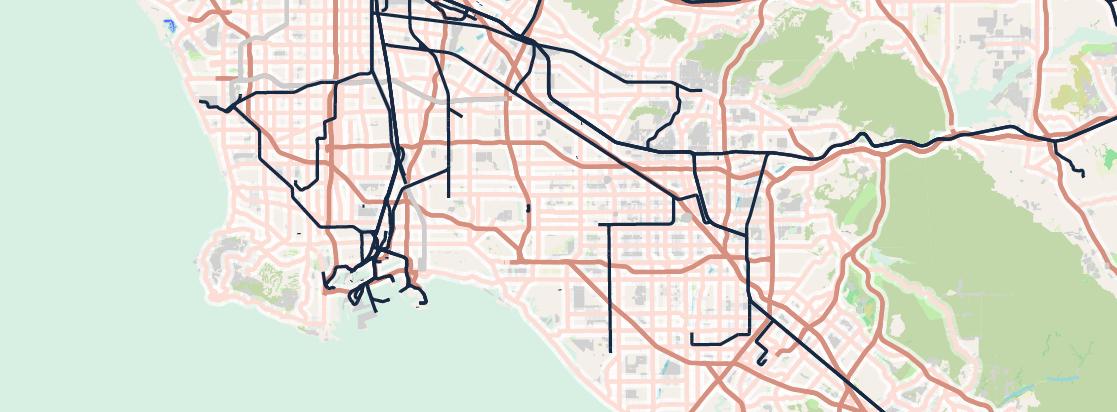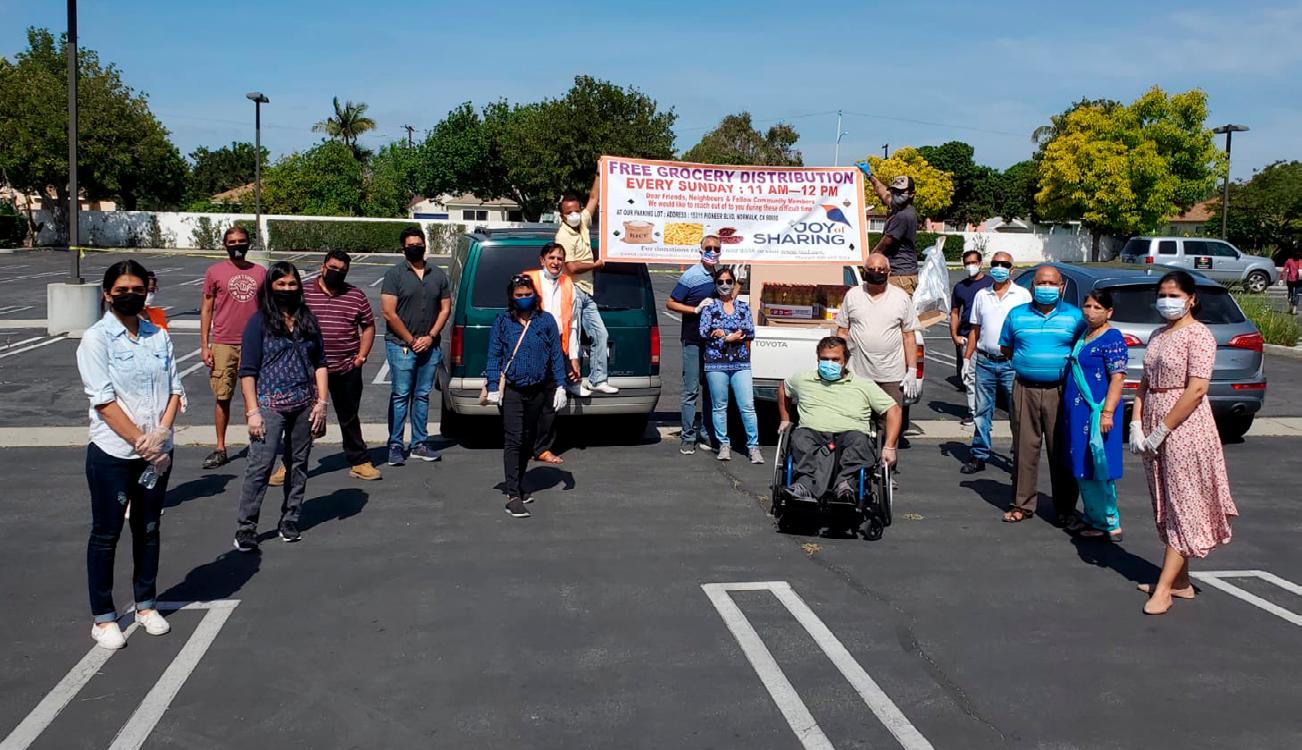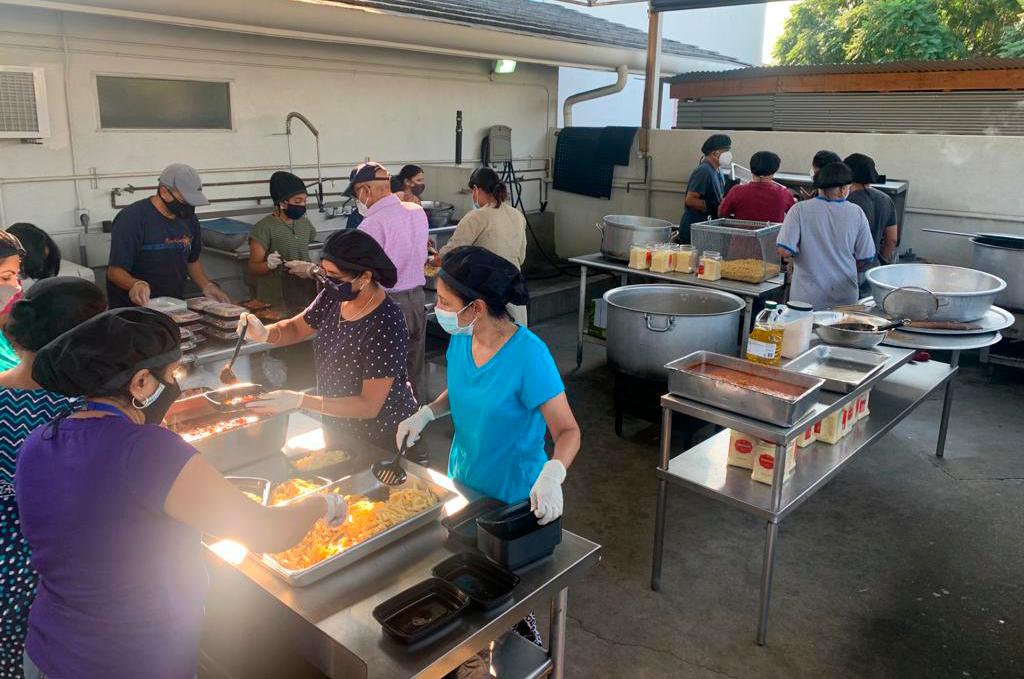
7 minute read
How an Idea Turned into 90,000+ Hot Meals Served
how an idea turned into
90,000+ Hot Meals Served
Advertisement
Rahi Shah, Janvee Patel
One evening in late April, Varun Gandhi got a call from Adhir Shah — having seen people struggling to provide for their families and facing loss of work and loved ones during the COVID-19 pandemic, he wanted to lend a helping hand. Through Facebook posts, Whatsapp messages, flyer distribution, and word of mouth, Varun and Adhir spread the word. And their networks leaned in to serve the community’s needs. Two weeks later, they served approximately 1,500 people through their first grocery drive. Recognizing a continuing need in the community and the positive impact they were able to make, they decided to do it again. And with a strong and widespread network in the Los Angeles/Orange County area, they were able to find helping hands. Another two weeks later, they served their first 100 hot meals. As the next two weeks progressed, they doubled to 200 hot meals. Realizing the demand, they decided to expand to 1,000 meals, but this meant more work and thus more funding. At this time, Dr. Nitin Shah joined the team, helping secure funding and meal commitments from nonprofit partners, like Sarva Mangal Trust Foundation and the Wadher Family Trust. Beginning in July, they recruited more volunteers, found food suppliers, partnered with nonprofits to help distribute food, and raised awareness about the project in their community. Shrenik Shah, Adhir’s son, was roped in to help the project scale; he coordinated with volunteers, donors, and supplies on the ground. Dr. Shah helped assemble an in-house meal preparation team, enabling the team to serve 2,000 meals a week. Varun, on the other hand, spent much of the early pandemic in Atlanta. Despite the distance, he was able to spearhead the outreach effort, forging connections with organizations across the region to enable meal distribution. Now, every Sunday, the team gathers about 20 volunteers together to help cook and package the meals, serving 2,000-2,500 people weekly. Finding Community Support
To scale their project’s impact, they needed more hands. As word spread, people of all ages showed up to volunteer. High school students in need of service hours signed up to help, and as their parents came to drop them off, some of
them stuck around and brought their friends. Volunteers came from several communities; Varun and Shrenik reached out to various cultural organizations including the Gujarati Samaj, the Jain Center of Southern California, and Sanatan Mandir. While some started volunteering with the notion that this was a short-term project, they also found comfort in the socialization volunteering days brought during the otherwise quiet pandemic. Although community support was crucial to scale up the project, they also needed those with domain knowledge and connections on the ground all over Los Angeles to drive the impact. Forging Connections

Working with a network of nonprofit organizations proved essential to optimizing distribution efforts. Presently, Shrenik and Varun work with Joy of Sharing, which sponsors resources (including the kitchen, which is shared with the Sanatan Mandir) for the project. Apart from Joy of Sharing, Varun and Shrenik have partnered with 25 other nonprofit organizations which help distribute the prepared meals to over 35 cities in the Los Angeles/ Orange County metro area. Whenever they have leftover funds to be donated, they reach out to their partner organizations to see if they can help fulfill any other needs. In the past, they have donated supplies like beanies, gloves, and tarps. Depending on partner needs at the time and flexibility in their budget, Varun and Shrenik strive to help in any way possible. By tapping into their networks, they created a cross-community effort that resulted in serving those in need in a real and meaningful way. Impact of COVID-19
Despite the hurdles that came with the ongoing global pandemic, Shrenik and Varun were able to successfully organize a community effort to help those in need. They implemented a contactless drop-off system in which people could drive up, open the trunk of their car, and 35 cities (within the Los Angeles and Orange County area)

13 months of service
8,500 grocery bags delivered
90,000 hot vegetarian meals served
have volunteers place groceries and meals inside. The hesitancy that came with the potential spread of the virus was countered by careful planning to mitigate the possibility of a widespread outbreak within their volunteer base. Volunteers chose their own shifts, and, for the most part, came in contact with the same group of volunteers each week. This made it easier to contact trace individuals in case someone tested positive. Social distancing during the packaging and cooking process was also encouraged and masks were required at all times. From Grocery Drives to Meal Distribution
When they initially started with a grocery drive, the team wasn’t thinking explicitly about optimization. After a few runs serving both hot meals and groceries, they began to notice patterns of waste. This motivated them to redirect all of their efforts to the hot meals, where they tended to see more success and impact. To serve 2,000+ meals per week, they cook in an industrial kitchen. Their raw food supplies come in bulk, with a weekly menu budgeted out with nutrition in mind. Volunteers help separate the bulk products into smaller portions to distribute, cook the predetermined items, and package the meals. The packed meals are then picked up by their partners on-site. Until recently, Varun and Shrenik would sit down to do this week-by-week. Now, with the regularity they’ve achieved, they can schedule and plan meals by the month to increase the campaign’s efficiency and focus on maximizing their impact with the funds they have. While the journey from the first grocery drive to today hasn’t been easy, perhaps the most impactful step was the first one — turning the idea into practice. That genuine feeling of Daan, or service, in Adhir’s mind was powerful enough to manifest as a phone call to Varun to get this kick-started. And the fact that so many people have gotten on board to help consistently is a testament to how fulfilling and contagious this sentiment is.
young minds #1
The Compatibility of Jainism & Modern Science “The verifiable health benefits of vegetarianism and Jain meditation present limitless applications in public health, which aim to prevent disease, prolong life, and promote human health.” Sunny Jain, January 30th, 2018
#2
Jainism & the Army “The theme of this article will revolve around how Jainism has allowed me to become a better leader in my organization and how The Army has allowed me to harness the fundamentals of the Jain Religion and apply them to everyday leadership challenges.” Raj Kankaria, CPT, May 2nd, 2017
#3
Unveiling Myself: Jainism, Mental Health, and My Experience as a FirstGeneration Youth “To give you a little background, I come from a strict Jain family, and both my parents have always been very active in the Jain community wherever we moved (which was very frequent), immersing myself into starting a youth group in the Edmonton Jain Society to make sure no one felt like a lone wolf like I did in the Jain community.” Kriti Shah, September 23rd, 2017
#4
Reflections on Jainism in the Time of Coronavirus “Those are the days when loved ones feel more vulnerable to danger, when the wounds of systemic racism feel hopelessly too deep, when a minute more in quarantine begins to feel like eternity, or when it feels like the world is spiraling in its own chaos.” Rea Savla, June 24th, 2020
#5
The Journey to Your Soul “Mahavir Bhagwan’s explanations of the soul encompass how: The Soul exists, the Soul is eternal, the Soul is the doer of actions, the Soul is the bearer of actions, Liberation exists, and the path to liberation exists.” Manvi Harde, October 22nd, 2018
#6
Planting a Seed: Nish Shah’s Journey to Self-Publishing a Jain Children’s Book “To Nish, creating this book was not only a gift for his daughter, but also a way to reconnect with Jain teachings, and even his mother.” Akash Jain & Vidhi Piparia, April 5th, 2021
#7
Anekantvad, defined (me) “For me, I thought back to the couple distinctive turning points in how I approached Jainism and where I concentrated my efforts: my journey in understanding Anekantvad.” Vishwa Shah, August 3rd, 2018
#8
Ahimsa in a Pro-Choice World “Reconciling a Pro-Choice stance on women’s rights and a commitment to Ahimsa requires balancing between the significance of the former and the power of the latter. To do this, one must consider questions deeply embedded in Jain philosophy.” Ayush Bhansali, October 22nd, 2018
#9
Maun Ekadashi | The Gift of Peace “Making an effort to silence these reactions is the truest, deepest definition of Maun, and this is what Suvrat Sheth practiced during his life.” Nami B. Jain & Rishi Zaveri, December 24th, 2020
#10
Chha Gaun Yatra — A Hidden Journey “This Chha Gaun yatra shows that not just this one hill, but the entire Shantrunjay Hills, are steeped in history and have been blessed by countless enlightened souls.” Rishi Zaveri, March 18th, 2019
Read all of these and more at
youngminds.yja.org.
Young Minds serves as a platform to unite the voices of Jains across North America, celebrating our community while sharing our perspectives and experiences with self-discovery.







